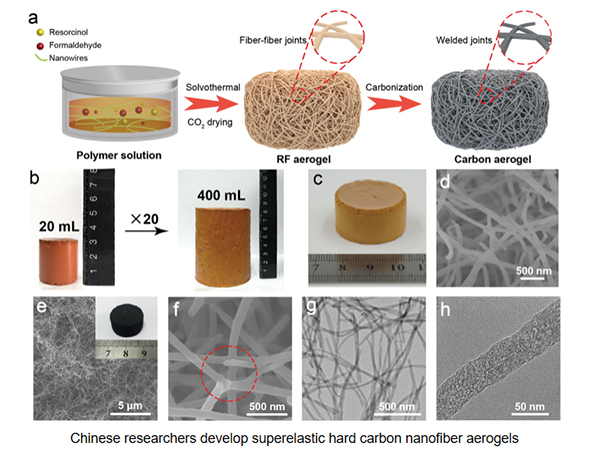
-
 Afrikaans
Afrikaans -
 Albanian
Albanian -
 Amharic
Amharic -
 Arabic
Arabic -
 Armenian
Armenian -
 Azerbaijani
Azerbaijani -
 Basque
Basque -
 Belarusian
Belarusian -
 Bengali
Bengali -
 Bosnian
Bosnian -
 Bulgarian
Bulgarian -
 Catalan
Catalan -
 Cebuano
Cebuano -
 China
China -
 China (Taiwan)
China (Taiwan) -
 Corsican
Corsican -
 Croatian
Croatian -
 Czech
Czech -
 Danish
Danish -
 Dutch
Dutch -
 English
English -
 Esperanto
Esperanto -
 Estonian
Estonian -
 Finnish
Finnish -
 French
French -
 Frisian
Frisian -
 Galician
Galician -
 Georgian
Georgian -
 German
German -
 Greek
Greek -
 Gujarati
Gujarati -
 Haitian Creole
Haitian Creole -
 hausa
hausa -
 hawaiian
hawaiian -
 Hebrew
Hebrew -
 Hindi
Hindi -
 Miao
Miao -
 Hungarian
Hungarian -
 Icelandic
Icelandic -
 igbo
igbo -
 Indonesian
Indonesian -
 irish
irish -
 Italian
Italian -
 Japanese
Japanese -
 Javanese
Javanese -
 Kannada
Kannada -
 kazakh
kazakh -
 Khmer
Khmer -
 Rwandese
Rwandese -
 Korean
Korean -
 Kurdish
Kurdish -
 Kyrgyz
Kyrgyz -
 Lao
Lao -
 Latin
Latin -
 Latvian
Latvian -
 Lithuanian
Lithuanian -
 Luxembourgish
Luxembourgish -
 Macedonian
Macedonian -
 Malgashi
Malgashi -
 Malay
Malay -
 Malayalam
Malayalam -
 Maltese
Maltese -
 Maori
Maori -
 Marathi
Marathi -
 Mongolian
Mongolian -
 Myanmar
Myanmar -
 Nepali
Nepali -
 Norwegian
Norwegian -
 Norwegian
Norwegian -
 Occitan
Occitan -
 Pashto
Pashto -
 Persian
Persian -
 Polish
Polish -
 Portuguese
Portuguese -
 Punjabi
Punjabi -
 Romanian
Romanian -
 Russian
Russian -
 Samoan
Samoan -
 Scottish Gaelic
Scottish Gaelic -
 Serbian
Serbian -
 Sesotho
Sesotho -
 Shona
Shona -
 Sindhi
Sindhi -
 Sinhala
Sinhala -
 Slovak
Slovak -
 Slovenian
Slovenian -
 Somali
Somali -
 Spanish
Spanish -
 Sundanese
Sundanese -
 Swahili
Swahili -
 Swedish
Swedish -
 Tagalog
Tagalog -
 Tajik
Tajik -
 Tamil
Tamil -
 Tatar
Tatar -
 Telugu
Telugu -
 Thai
Thai -
 Turkish
Turkish -
 Turkmen
Turkmen -
 Ukrainian
Ukrainian -
 Urdu
Urdu -
 Uighur
Uighur -
 Uzbek
Uzbek -
 Vietnamese
Vietnamese -
 Welsh
Welsh -
 Bantu
Bantu -
 Yiddish
Yiddish -
 Yoruba
Yoruba -
 Zulu
Zulu
Durable and Efficient Underground Fiberglass Tanks for Water Storage Solutions
Understanding Underground Fiberglass Tanks Benefits, Applications, and Considerations
In recent years, the use of underground fiberglass tanks has gained significant popularity due to their numerous advantages over traditional materials such as steel and concrete. These tanks are pivotal in various industries, including wastewater management, petroleum storage, and water treatment, to name a few. This article aims to delve into the advantages, applications, installation, and maintenance of underground fiberglass tanks, providing a thorough understanding of their role in modern infrastructure.
Advantages of Underground Fiberglass Tanks
One of the primary benefits of fiberglass tanks is their resistance to corrosion. Unlike steel tanks, which can deteriorate over time due to rusting when exposed to moisture and chemicals, fiberglass is impervious to many aggressive substances. This quality significantly extends the lifespan of the tank, making it a cost-effective investment.
Another advantage is the lightweight nature of fiberglass. This characteristic simplifies transportation and installation, reducing labor costs and time associated with setting up the tanks. Their lightweight composition enables easy handling, making it feasible to install them in various locations without the need for heavy machinery.
Furthermore, underground fiberglass tanks provide excellent structural integrity. They can withstand high pressures from surrounding soil and water, ensuring safety and reliability. The design flexibility of fiberglass also allows for custom shapes and sizes, catering to specific operational needs. Additionally, fiberglass tanks can be insulated to maintain temperature for certain liquids, such as fuels, enhancing their efficiency.
Applications of Underground Fiberglass Tanks
Underground fiberglass tanks are widely used in various sectors. In the petroleum industry, they often serve as fuel storage tanks for gas stations and distribution centers. Their ability to resist corrosion from fuels and chemicals makes them an ideal choice for storing volatile substances.
In wastewater management, fiberglass tanks are utilized for storing wastewater before treatment. Their durability ensures that they can handle the harsh conditions of wastewater without risk of failure or leakage. Similarly, in rainwater harvesting systems, fiberglass tanks can store collected rainwater for later use, contributing to sustainable water management practices.
underground fiberglass tanks

Moreover, fiberglass tanks find applications in industries such as agriculture, where they are used for storing fertilizers and pesticides. Their resistance to chemical degradation ensures that the stored materials remain uncontaminated, contributing to safer agricultural practices.
Installation and Maintenance
The installation of underground fiberglass tanks involves several critical steps. Proper site selection is crucial to avoid potential issues such as flooding or soil instability. After selecting an appropriate site, excavation is carried out to create a suitable space for the tank. The tank is then placed in the excavation and backfilled with soil to provide support and stability.
Regular maintenance is essential to ensure the longevity and reliability of fiberglass tanks. While they are generally low-maintenance, periodic inspections are necessary to detect any signs of wear or damage. This includes checking for cracks, leaks, or changes in structural integrity. It is also advisable to monitor the tank’s contents regularly to ensure that there are no unexpected changes in quality or quantity.
Environmental Considerations
One of the significant benefits of using underground fiberglass tanks is their positive environmental impact. Due to their resistance to leaks and spills, fiberglass tanks minimize the risk of soil and groundwater contamination—a critical concern in today's environmentally conscious world. As regulations surrounding hazardous material storage become stricter, the use of reliable and safe storage solutions like fiberglass tanks will likely continue to rise.
Conclusion
In conclusion, underground fiberglass tanks offer a range of advantages, making them a superior choice for various applications in multiple industries. Their corrosion resistance, lightweight structure, and structural integrity ensure that they can meet the demands of storing different materials safely. As environmental concerns mount and the need for reliable storage solutions grows, fiberglass tanks are poised to play an increasingly vital role in contemporary infrastructure, aligning with both economic and ecological goals.









